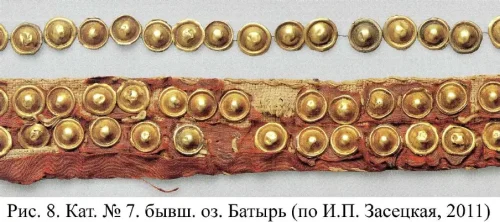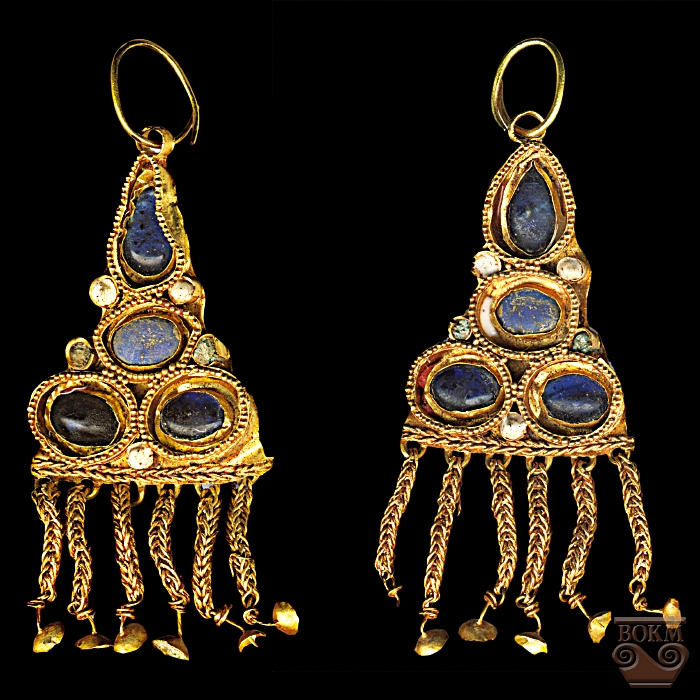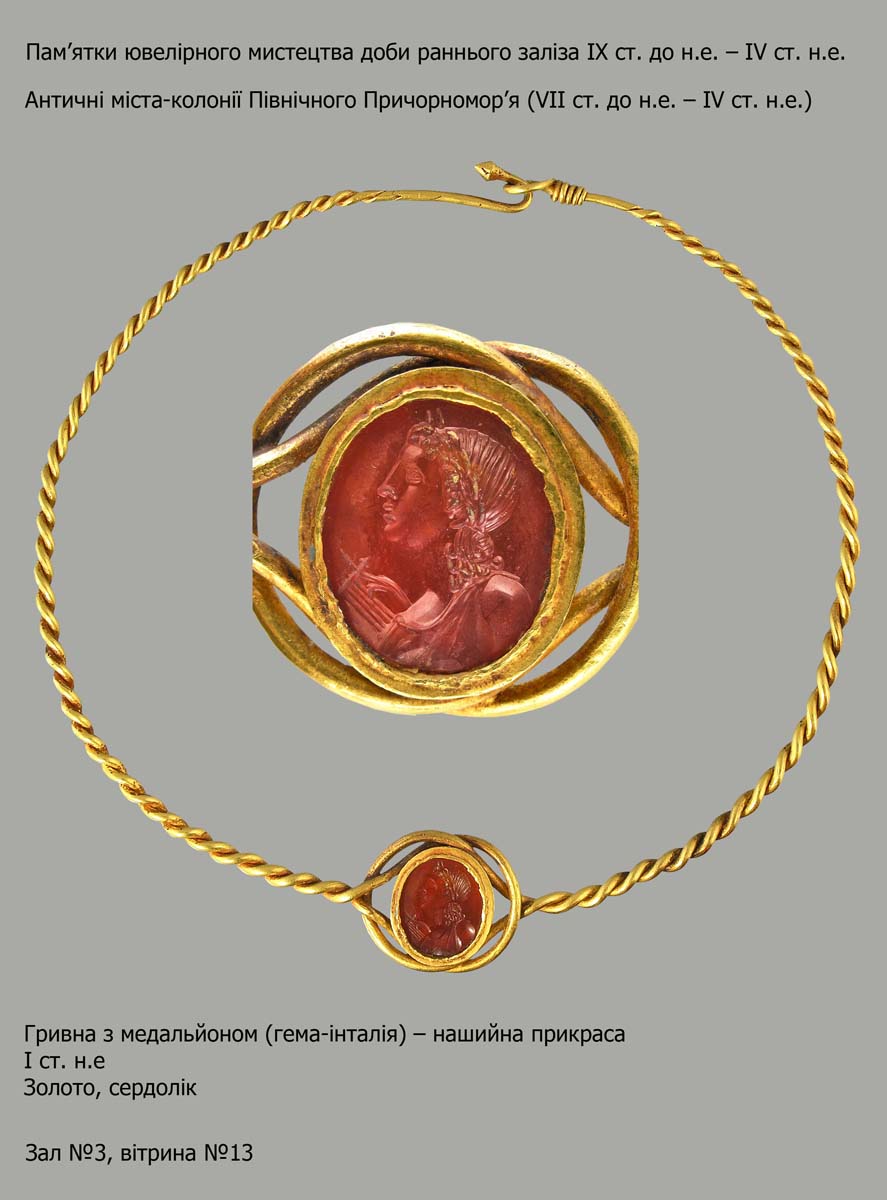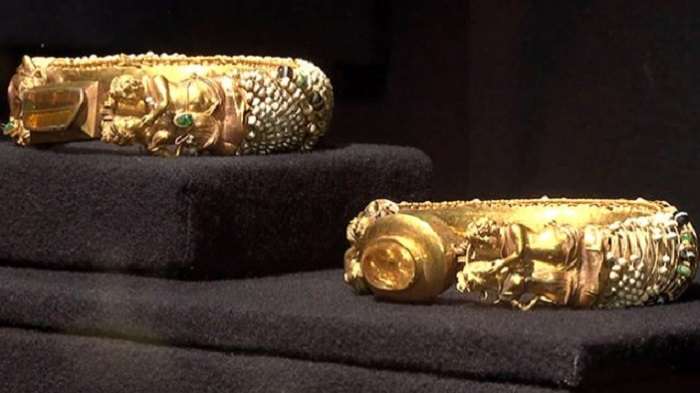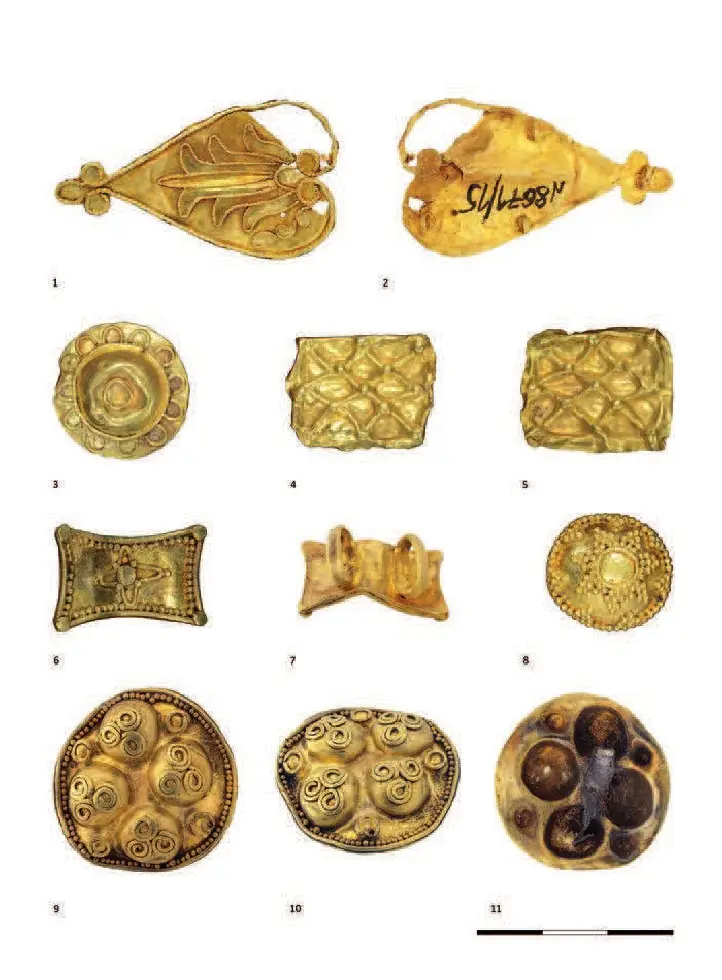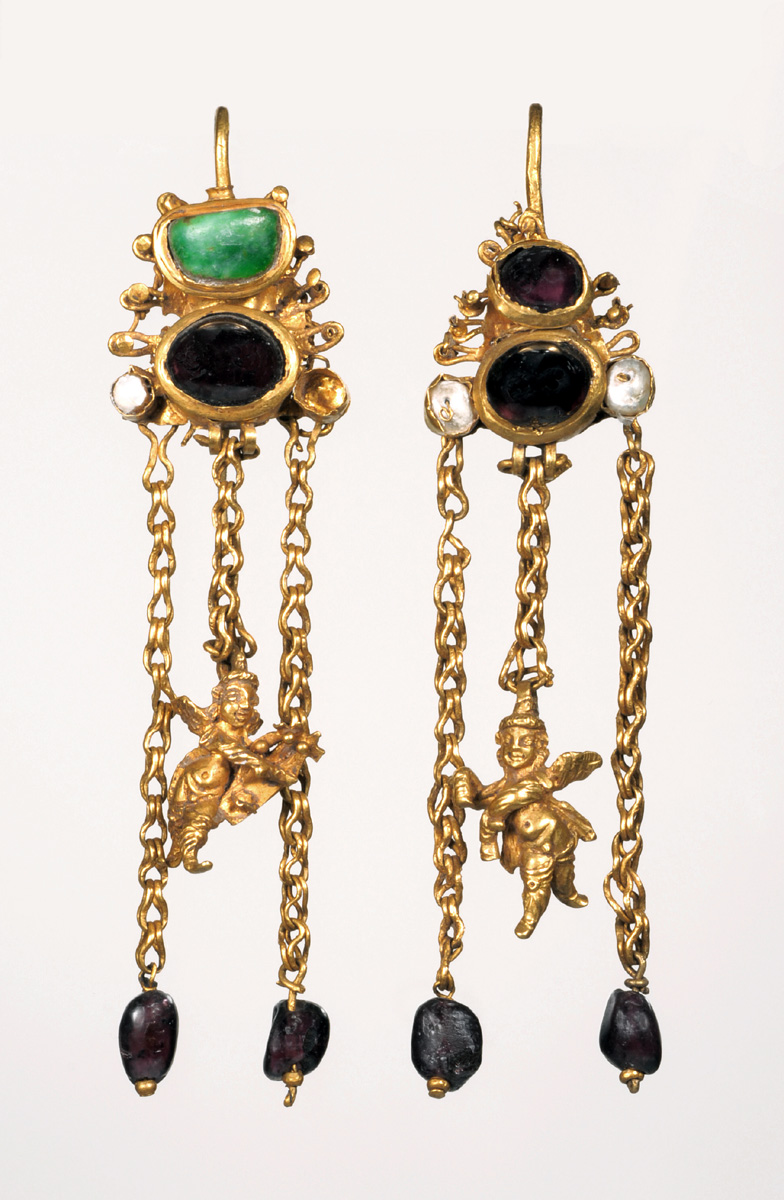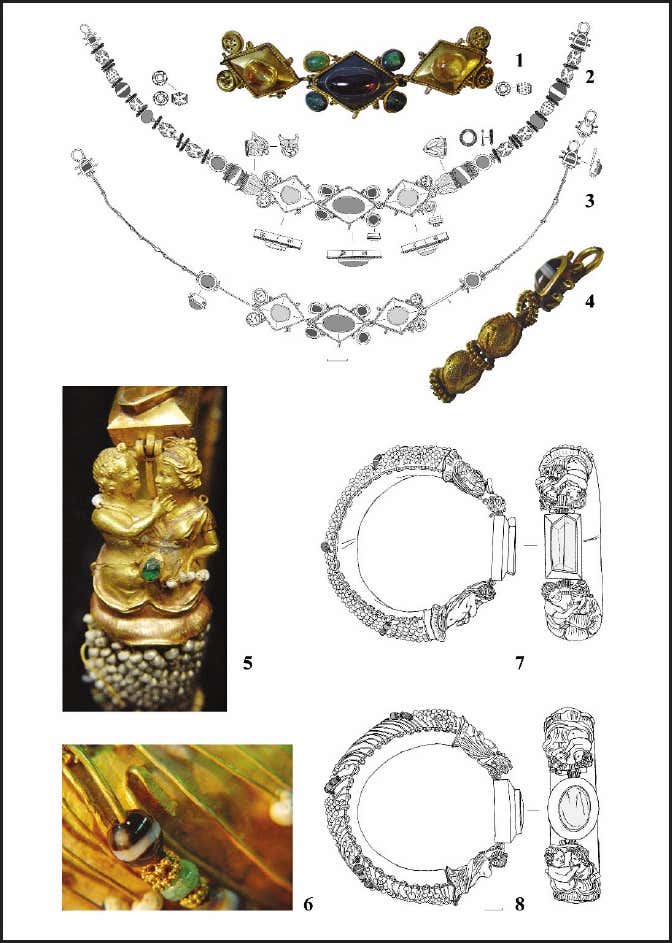“the 3rd century AD Late Sarmatian treasure from Lake Batyr in south-western Kazakhstan (north-east of the Caspian Sea)” [Treister M., Gold Vessels, Perfume Flasks and Pyxides from Sarmatia].
“This find included: a miniature gold bottle, rock crystal in a gold frame, a pair of gold earrings, small gold plaques sewn onto fabric, a gold mug, pearls, a leather box and, two (…) most likely chalcedony beads.” [K. M. Skalon]
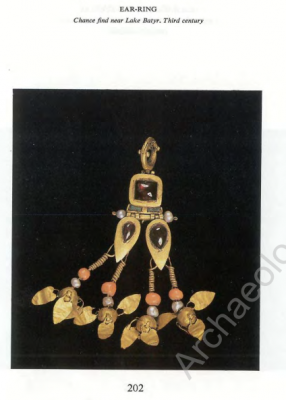
Parthian-like earrings, gold, garnet, coral and pearls;
3rd century. Found near the Batyr-Bai (Batyrbai, Batyrbek ) lake, Kazakhstan (a chance find).
Akishev A.K., Ancient gold of Kazakhstan, 1983
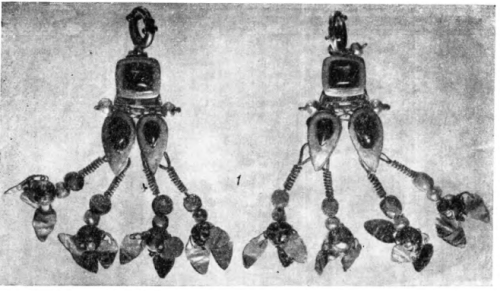
[K.M. Skalon] “Each earring consists of several links: a round ring with a folding bow, three smooth gold shields (one square and two grain-shaped) with garnet inserts and four pendants. The links are connected by pins passed through loops soldered onto the shields; the ends of the pins end in pearls. Wire pendants. One end is rounded with a spiral, and on the other there are coral and pearl beads, as well as gold balls. Three loops are soldered onto each such ball, through which wire arms are passed. The ends of the arms are flattened and soldered to oval plaques made of thin gold leaf.
Decoration of earrings and other jewelry with colored inserts and various pendants became widespread in Roman times in the art of the Sarmatian-Alan tribes, as well as in ancient applied art in the cities of the Northern Black Sea region.”
“An ear-ring set with garnets, turquoise, pearls and coral discovered near Lake Batyr in Kazakhstan illustrates the nature of trade contacts in the first centuries AD (Skalon 1961, 117). The construction of its upper section resembles that of Parthian earrings from Tell Umar in Mesopotamia (Braidwood 1933, 65, 69), its middle section may be compared to the ear-rings from Tomb No. 6 at Armaziskhevi in Soviet Georgia (Apakidze et al. 1958, 278), but the addition of dangling gold leaves and coral transforms it into an example of local Bactrian taste.” [Debra Noel Adams, Late Antique, migration period and Early Byzantine garnet cloisonné ornaments: Origins, styles and workshop production, pp.285-286 https://discovery.ucl.ac.uk]
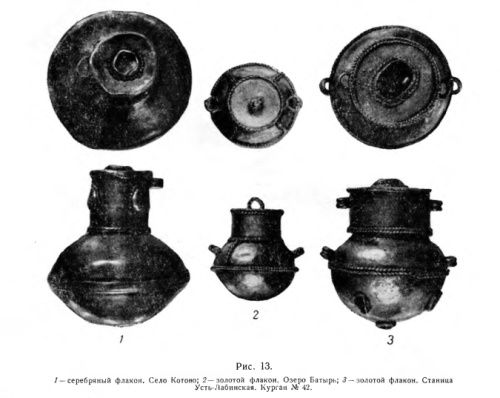
К.М. Скалон [K. M. Skalon]. О культурных связях восточного Прикаспия в позднесарматское время. — 114-140, Археологический сборник Государственного Эрмитажа (АСГЭ). Выпуск 02, 1961
The gold bottle [3rd century] was part of the find discovered in a cave of a high mountain on the shore of Lake Batyr, Kazakhstan (Fig. 13, 2). [на восточном берегу озера Батырь]

Crystal quartz pendant, a pommel of a sword
after K. M. Skalon
“A pendant made of rock crystal of a hemispherical shape, cross-shaped surrounded by narrow plates of thin gold leaf. Five sockets with two round and two grain-like inserts made of almandines and colored glass are soldered on the plates. In the center is another oval insert made of yellow glass. A thin plate-shaped ear, decorated with three rollers, is soldered on the side. Originally, this object served as the pommel of a sword handle, as indicated by a through hole hidden by a gold leaf.”

To compare

НАВЕРШИЕ МЕЧА С ПРЯЖКОй III в. н. э. Горный хрусталь, медь, золото, гранат.
Диаметр навершия 4 см. Диаметр пряжки 2,5 см
ВОКМ, инв. № 33129/122,123
Найдено у ж.-д. ст. Гремячая Котельниковского р-на Курган 2, погребение 1, раскопки Л. В. Гуренко, 2008 г.
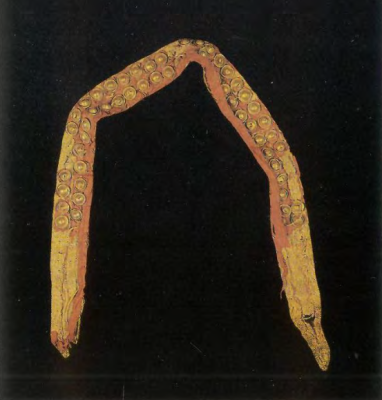
After Akishev A.K.
Headband with gold round ornaments – a long strip of unbleached linen tapering towards the ends is covered on top with a thin red silk fabric. The ends of the strip were, most likely, ended with laces for tying. L. 40 cm, w. 4.5 cm
[K. M. Skalon] “Sewn across the entire strip are identical round gold plaques, about 0.8 cm in diameter, with a convex middle, a smooth bead along the edge and a loop on the back. The silk fabric was not completely preserved, mainly in those places where sewn gold plaques survived. Some of them have fallen off and are stored separately. In the past, apparently, they covered the entire strip.
This is indicated by scraps of silk fabric on some individual plaques. Gold plaques of various geometric shapes, intended for sewing on clothes and shoes, were widespread in Sarmatian times throughout the Northern Black Sea region. They are especially common in Sarmatian burial mounds of the North Caucasus, less often in the burial grounds of the Volga region and the steppe regions between the Don and Dnieper. Many similar plaques were found in the necropolises of Chersonesos and Scythian Naples. They were also discovered on the territory of ancient Iberia, for example, near Bori in the already mentioned Armaz burial ground and on the Ingur River, as well as in some burial grounds and ancient cities of Central Asia.”
Sergey Yatsenko 1986
Диадемы степных кочевников Восточной Европы в сарматскую эпоху / Diadems of the East European Steppe Nomads in Sarmatian Epoch https://www.academia.edu
